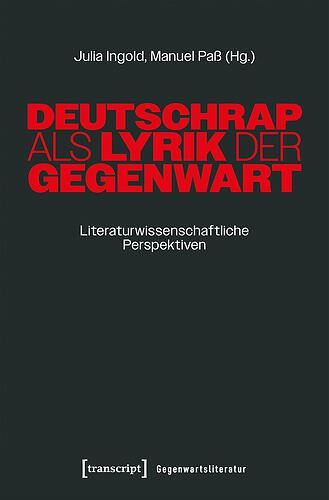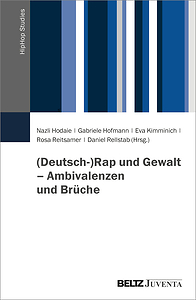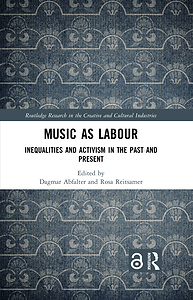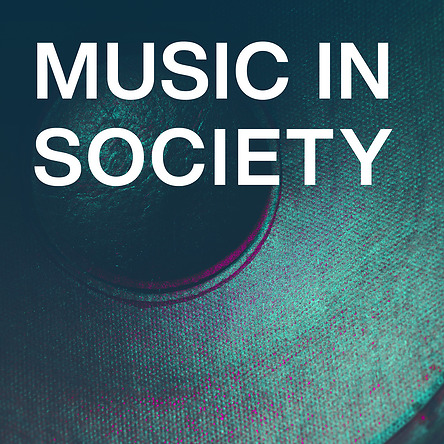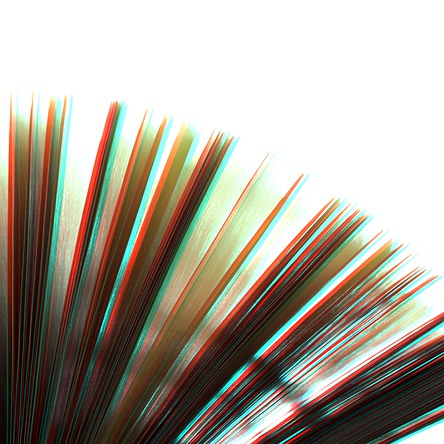GANGSTA-RAP-KARRIEREN: MÄNNLICHKEIT, GEWALT UND DAS UNTERNEHMERISCHE SELBST
Deutschrap als Lyrik der Gegenwart
Edited by Julia Ingold and Manuel Paß
Bielefeld: transcript
UNGLEICHHEITEN IN DER KLASSISCHEN MUSIKAUSBILDUNG
Rosa Reitsamer and Rainer Prokop
Üben und Ver_Üben. Diversität als diskriminierungskritische Praxis in Kunst, Kultur und Bildung
Edited by Ulli Mayer, Andrea Ellmeier and Gerda Müller
Bielefeld: transcript
OPEN ACCESS EDITED VOLUME
HIGHER MUSIC EDUCATION AND EMPLOYABILITY IN A NEOLIBERAL WORLD
Edited by Rainer Prokop and Rosa Reitsamer
London · New York: Bloomsbury
› BOOK DOWNLOAD @ BLOOMSBURY COLLECTIONS ‹
The ebook editions of this book are available open access on Bloomsbury Collections.
Open access was funded by the mdw – University of Music and Performing Arts Vienna.
EDITED VOLUME
(DEUTSCH-)RAP UND GEWALT – AMBIVALENZEN UND BRÜCHE
Edited by Nazli Hodaie, Gabriele Hofmann, Eva Kimminich, Rosa Reitsamer and Daniel Rellstab
Weinheim · Basel: Beltz Juventa
THE DIY CAREERS OF YOUNG CLASSICAL MUSICIANS IN NEOLIBERAL TIMES
Rainer Prokop and Rosa Reitsamer
DIY, Alternative Cultures & Society (SAGE)
THE ROLE OF MUSIC CONSERVATOIRES IN THE MAKING OF CLASSICAL MUSIC CAREERS
Rainer Prokop and Rosa Reitsamer
Voices for Change in the Classical Music Profession
Edited by Anna Bull, Christina Scharff and Laudan Nooshin
New York: Oxford University Press
MUSIC AS LABOUR: INEQUALITIES AND ACTIVISM IN THE PAST AND PRESENT
Edited by Dagmar Abfalter and Rosa Reitsamer
London: Routledge
RECENT MEDIA CONTRIBUTIONS
Rainer Prokop in an interview with ORF.at | ORF News | Christina Vogler on Taylor Swift, neoliberalism and postfeminism, 3 October 2025: "'Wo Taylor draufsteht, wird gekauft' – Swift lässt das 'Showgirl' raus"
Rosa Reitsamer in an interview with Deutschlandfunk Kultur about masculinities and violence in German rap, 30 July 2025: "'Mann Muss' von Apache 207: In der Männlichkeitsfabrik des Deutschrap"
Rainer Prokop in an interview with PlutooPictures about Psy (Park Jae-Sang), Gangnam Style, K-Pop and the global music industries for the documentary and biopic "The Unbelievable Gangnam Style Story" @ YouTube, released on 5 July 2025
Rosa Reitsamer in an interview with Thomas Mießgang on youth and youth cultures for Radio Ö1 Diagonal, 28 June 2025: "Forever Young"
Rosa Reitsamer in an interview with Stern | Maja Goertz | Larena Klöckner on Zsá Zsá, female pop stars and postfeminism, 19 June 2025: "Zsá Zsá hat die Formel für schnellen Erfolg gefunden"
Rainer Prokop @ Ö1 Intrada | Katharina Hirschmann (Radio Ö1 Sportwoche) in conversation with sport sociologist Otmar Weiß about competition(s) in sport and (classical) music, 11 April 2025: "Schneller, höher, weiter? – Wettbewerbe in Sport und Musik"
Rainer Prokop in an interview with Christian Hofmann on music labour markets, precarious working conditions and portfolio careers of musicians @ ZIB 1, ORF 1 and ORF 2, 19 March 2025: "Internationaler Musikmarkt wächst dank Streaming"
Review by Juan Escobar Campos of the open access edited collection "Higher Music Education and Employability in a Neoliberal World" (2024), edited by Rainer Prokop and Rosa Reitsamer and published with Bloomsbury, mdw-Magazin, 26 February 2025: "Review: Higher Music Education and Employability in a Neoliberal World"
Rainer Prokop in an interview with Walter Gröbchen and Thomas Mießgang on glam rock for the Ö1-Radiokolleg "Trash, Glam, Glitter", 2-5 December 2024: Part 1, Part 2, Part 3 and Part 4
Rainer Prokop in an interview with Welt | Welt am Sonntag | Stefan Frommann about Schlager and the Amigos, 10 November 2024: "Die Amigos: Das größte Phänomen der deutschen Musik"
Rainer Prokop in an interview with Madeleine Gromann about Taylor Swift and the Swifties for Radio Ö1 Morgenjournal, 6 August 2024: "Was steckt hinter dem Hype um Taylor Swift?"
Excerpts from Rainer Prokop's interview with Funke Mediengruppe on Rammstein, male-dominated music industries and the reproduction of social inequalities in the Berliner Kurier, 16 July 2024: "Krasse Interviews: So urteilen Experten über die Fans von Rammstein"
Rainer Prokop in an interview with Funke Mediengruppe | Emily Kietsch on Rammstein, male-dominated music industries and the reproduction of social inequalities, 12 July 2024: "Experte zu Fall Rammstein: Das Problem sind die weißen Männer", published online in 12 German daily newspapers, including the Berliner Morgenpost, Hamburger Abendblatt and Westdeutsche Allgemeine Zeitung (WAZ)
Rosa Reitsamer in an interview with Oberösterreichische Nachrichten | Helmut Atteneder, 3 June 2024: "'L´amour toujours': Ein Liebeslied, plötzlich mit Nazi-Refrain"
Interview contribution by Rainer Prokop for the book: "Row Zero: Gewalt und Machtmissbrauch in der Musikindustrie" by Daniel Drepper (Head of the Research Cooperation between NDR, WDR and Süddeutsche Zeitung) and Lena Kampf (Deputy Head of the Investigative Research Department of the Süddeutsche Zeitung), book publication date: 28 May 2024



